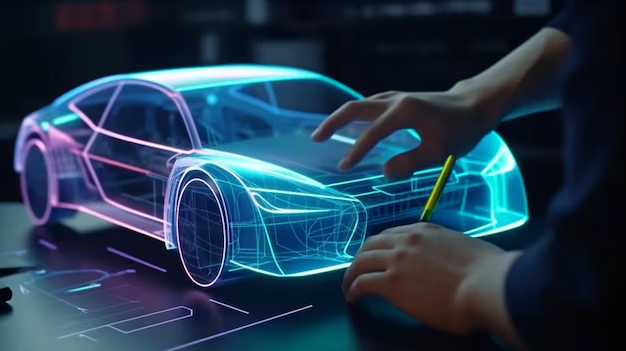Innovations in Electric Vehicle Parts: Driving the Future of Transportation
The automotive industry is undergoing a revolutionary transformation with the rise of electric vehicles (EVs). At the heart of this transformation are innovations in electric vehicle parts, which are pivotal in enhancing the performance, efficiency, and sustainability of EVs. From advanced batteries to cutting-edge motors, these components are redefining what vehicles can achieve. This article explores the latest innovations in electric vehicle parts and their impact on the EV industry.

Advanced Battery Technology
One of the most critical components of electric vehicles is the battery. Innovations in battery technology are essential for improving the range, charging speed, and overall performance of EVs. Recent advancements include:
-
Solid-State Batteries: These batteries replace the liquid electrolyte with a solid one, offering higher energy density, faster charging times, and improved safety compared to traditional lithium-ion batteries. Companies like Toyota and QuantumScape are leading the development of solid-state batteries.
-
Lithium-Sulfur Batteries: These batteries promise a higher energy density than lithium-ion batteries, potentially doubling the range of electric vehicles. They also use sulfur, which is more abundant and less expensive than cobalt used in lithium-ion batteries.
-
Graphene Batteries: Graphene's superior conductivity and strength make it an excellent material for battery electrodes. Graphene batteries can significantly reduce charging times and increase the lifespan of electric vehicle batteries.
Electric Motors and Power Electronics
Electric motors are the driving force behind electric vehicles. Innovations in motor technology and power electronics are crucial for improving the efficiency and performance of EVs. Key advancements include:
-
Permanent Magnet Synchronous Motors (PMSMs): These motors are highly efficient and offer superior performance compared to induction motors. PMSMs are commonly used in high-performance electric vehicles like the Tesla Model S.
-
Switched Reluctance Motors (SRMs): SRMs are gaining attention due to their simplicity, reliability, and cost-effectiveness. They do not require rare earth materials, making them an environmentally friendly alternative.
-
SiC and GaN Power Electronics: Silicon carbide (SiC) and gallium nitride (GaN) are emerging materials for power electronics, offering higher efficiency and faster switching speeds than traditional silicon-based components. These materials are used in inverters and converters, which are essential for managing the power flow in electric vehicles.
Charging Infrastructure and Wireless Charging
Innovations in charging infrastructure are essential to support the growing number of electric vehicles on the road. Key developments include:
-
Ultra-Fast Charging Stations: Companies like Tesla, Ionity, and Electrify America are developing ultra-fast charging stations that can provide up to 350 kW of power, significantly reducing the time it takes to charge an electric vehicle.
-
Wireless Charging: Wireless charging technology allows electric vehicles to charge without being physically connected to a charging station. This technology uses electromagnetic fields to transfer energy between a charging pad on the ground and a receiver on the vehicle. Companies like WiTricity and Qualcomm are pioneering wireless charging solutions.
-
Vehicle-to-Grid (V2G) Technology: V2G technology allows electric vehicles to return excess energy to the grid, helping to balance supply and demand. This innovation not only supports the electrical grid but also provides EV owners with potential financial incentives.
Lightweight Materials and Aerodynamics
Reducing the weight and improving the aerodynamics of electric vehicles are crucial for enhancing their efficiency and range. Innovations in materials and design include:
-
Carbon Fiber and Composites: Carbon fiber and other composite materials are increasingly used in electric vehicles to reduce weight without compromising strength. These materials are used in the body, chassis, and other structural components of EVs.
-
Aluminum Alloys: Aluminum is another lightweight material used extensively in electric vehicles. Advanced aluminum alloys offer a good balance of strength, weight, and cost, making them ideal for various EV parts.
-
Aerodynamic Design: Improving the aerodynamics of electric vehicles reduces drag and increases efficiency. Innovations in design, such as active aerodynamics and smooth underbody panels, help to achieve better aerodynamic performance.
Thermal Management Systems
Efficient thermal management is crucial for maintaining the performance and longevity of electric vehicle parts. Innovations in thermal management systems include:
-
Liquid Cooling Systems: Advanced liquid cooling systems are used to manage the temperature of batteries, motors, and power electronics. These systems provide better heat dissipation compared to air cooling, ensuring optimal performance under various conditions.
-
Phase Change Materials (PCMs): PCMs absorb and release heat during phase transitions, providing efficient thermal management for electric vehicle batteries. These materials help to maintain a stable temperature range, enhancing battery performance and lifespan.
-
Heat Pumps: Heat pumps are used in electric vehicles to efficiently manage cabin heating and cooling. They transfer heat between the vehicle's interior and exterior, reducing the energy required for climate control and increasing the vehicle's overall efficiency.
Autonomous Driving and Advanced Driver Assistance Systems (ADAS)
Electric vehicles are often at the forefront of autonomous driving and ADAS innovations. These technologies enhance safety, convenience, and efficiency. Key advancements include:
-
Lidar and Radar Sensors: These sensors are crucial for enabling autonomous driving and ADAS features. They provide accurate distance and object detection, allowing electric vehicles to navigate and make decisions autonomously.
-
Advanced Computing Platforms: Powerful computing platforms are necessary to process the vast amounts of data generated by autonomous driving systems. Companies like Nvidia and Intel are developing advanced AI chips and platforms for electric vehicles.
-
Connectivity and Over-the-Air (OTA) Updates: Connectivity features enable electric vehicles to communicate with each other and with infrastructure. OTA updates allow manufacturers to remotely update software, improving vehicle performance and adding new features without requiring a visit to the service center.
Conclusion
The rapid advancements in electric vehicle parts are driving the future of transportation. From cutting-edge battery technology to advanced electric motors, and from innovative charging solutions to lightweight materials, these innovations are enhancing the performance, efficiency, and sustainability of electric vehicles. As the automotive industry continues to evolve, these advancements will play a crucial role in shaping a cleaner, more efficient, and more connected future.
Embracing these innovations not only accelerates the adoption of electric vehicles but also contributes to a sustainable and eco-friendly transportation ecosystem. The future of electric vehicle parts is bright, promising a new era of automotive excellence.


You must be logged in to post a comment.